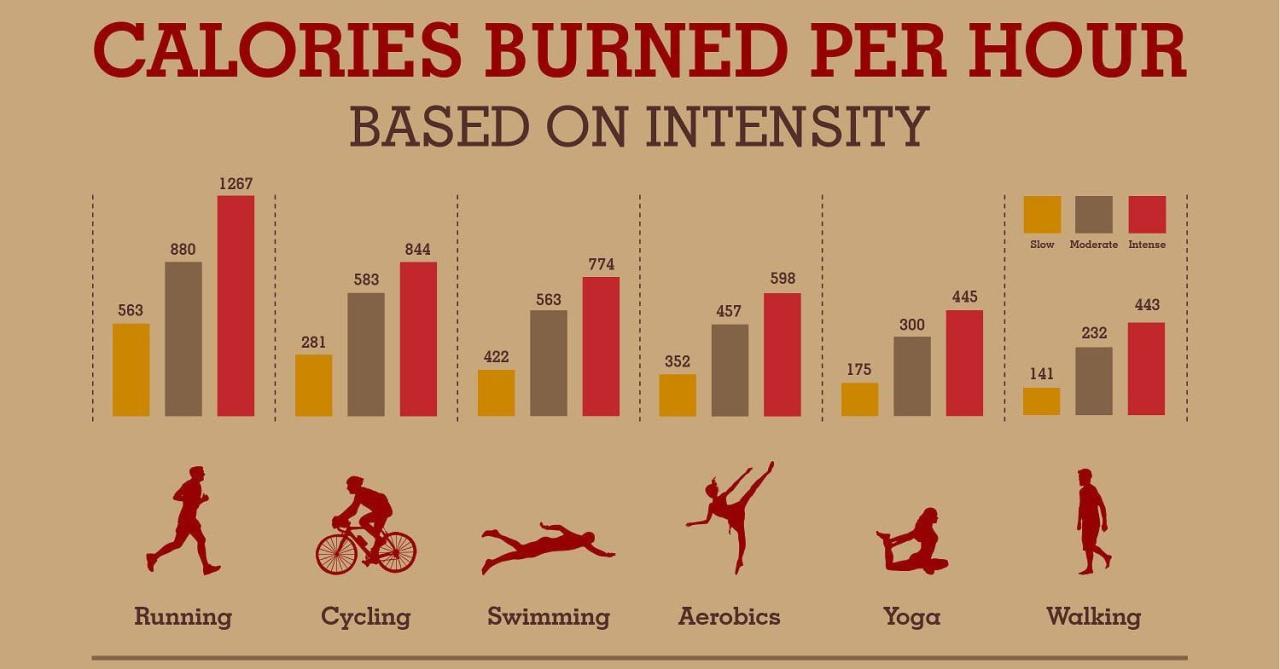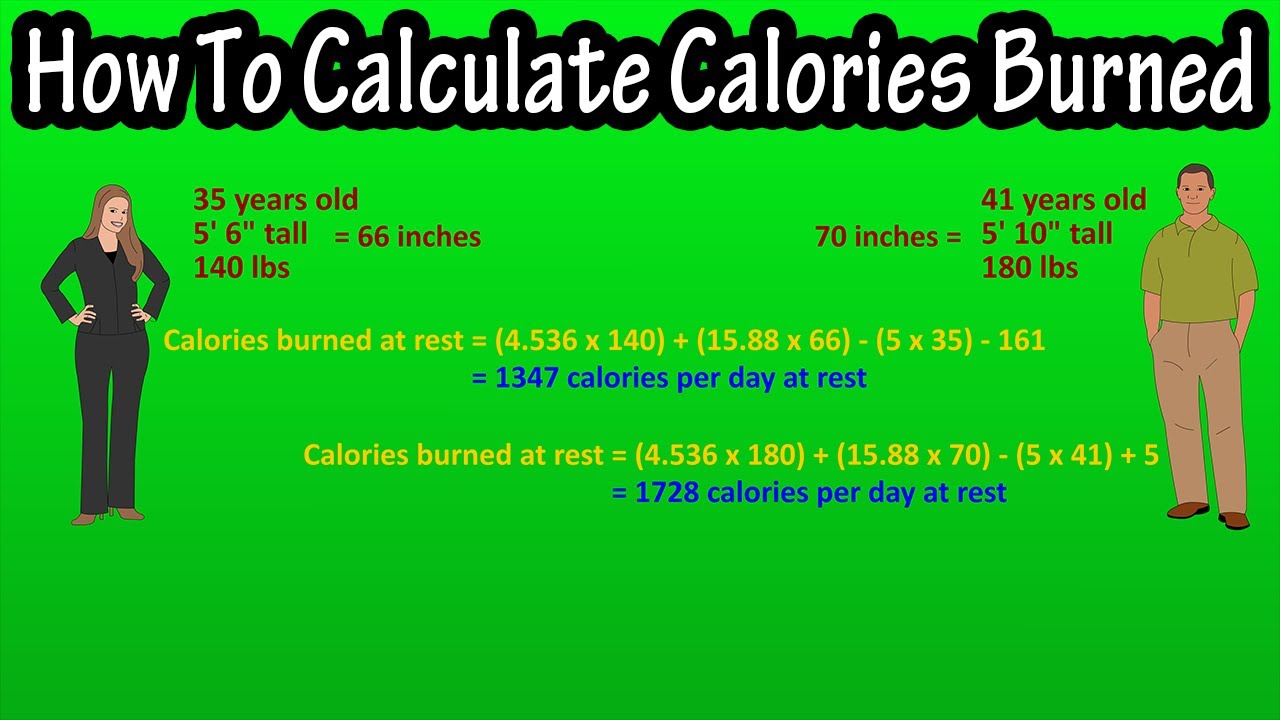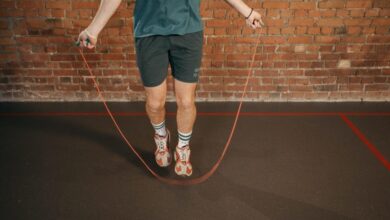
How Does Standing Burn Calories and Ways to Amplify It
How does standing burn calories and ways to amplify it? That’s the burning question (pun intended!), and one I’ve been exploring lately. Turns out, simply standing burns more calories than sitting, thanks to the subtle muscle engagement required to maintain an upright posture. But it’s not just about standing still; we’ll delve into how posture, fidgeting, and even incorporating mini-workouts into your day can significantly boost your calorie burn.
Get ready to discover how you can easily transform your daily routine into a calorie-torching machine!
We’ll unpack the science behind this, exploring the role of your basal metabolic rate (BMR), the impact of different standing activities, and how factors like your weight, height, and even your diet can influence your calorie expenditure. We’ll also look at practical strategies to increase your non-exercise activity thermogenesis (NEAT) – basically, all the extra movement you do throughout the day – and how to make standing a more effective part of your weight management plan.
Think standing desks, mindful posture, and even sneaky exercises you can do while waiting for the kettle to boil!
Basal Metabolic Rate and Standing

Source: pinimg.com
Your basal metabolic rate (BMR) is the number of calories your body burns at rest to maintain basic functions like breathing, blood circulation, and cell repair. While it’s often discussed in relation to sleeping, BMR also plays a significant role in calorie expenditure while standing, albeit a small one compared to more active pursuits. Standing requires slightly more energy than sitting due to the engagement of more muscle groups to maintain posture and balance.Standing, even at rest, burns more calories than sitting because it requires continuous muscle activation to maintain an upright position.
This increased muscle activity, though minimal compared to exercise, contributes to a higher energy expenditure than the completely relaxed state of sitting. The difference, however, is relatively small; it’s not a significant calorie-torching activity in itself.
BMR Differences Between Sitting and Standing at Rest
The difference in calorie expenditure between sitting and standing at rest is subtle but measurable. Studies have shown that standing burns approximately 10-20% more calories than sitting for the same period. This translates to a slightly increased BMR while standing. For example, a person with a BMR of 1500 calories per day might burn an extra 15-30 calories per hour simply by standing instead of sitting.
This increase is primarily due to the increased muscle activity required for postural maintenance. It’s important to note that these figures are averages and can vary based on individual factors like body composition, age, and metabolism.
BMR Variation Based on Body Composition While Standing
An individual’s body composition significantly influences their BMR, even while standing. People with more muscle mass have a higher BMR than those with more fat mass because muscle tissue is metabolically more active. For instance, a muscular individual weighing 180 pounds might have a higher BMR while standing compared to a less muscular individual of the same weight.
This is because the muscular individual’s body requires more energy to maintain the muscle tissue, even at rest. The difference, however, remains within the small range of increased calorie expenditure associated with standing versus sitting. Consider two individuals, both standing at rest for an hour. One, a highly trained athlete with a high muscle mass, might burn 15 calories more than a sedentary individual with significantly lower muscle mass, even though the overall calorie expenditure increase from standing remains relatively modest for both.
Calorie Burn from Muscular Activity During Standing
Standing, while seemingly passive, requires continuous low-level muscular engagement to maintain balance and posture. This constant, subtle activity contributes to your overall daily calorie expenditure, although the amount is relatively small compared to more strenuous activities. Even small variations in posture and movement can impact the number of calories burned.
Maintaining an upright posture involves the coordinated action of numerous muscles throughout your body. Your core muscles, including your abdominal and back muscles, work to stabilize your spine. Your leg muscles, particularly your quads and calves, are constantly firing to keep you balanced and prevent you from collapsing. Even your neck and shoulder muscles play a role in holding your head upright.
This constant isometric contraction, where muscles maintain tension without significant shortening or lengthening, contributes to a measurable increase in calorie expenditure compared to lying down or sitting.
Posture’s Influence on Calorie Expenditure
Good posture, characterized by a straight spine, relaxed shoulders, and engaged core, generally requires slightly more muscular effort than slouching. While the difference might seem insignificant, consistently maintaining good posture throughout the day can lead to a noticeable increase in calorie burn over time. Slouching, on the other hand, reduces muscle activation and consequently lowers calorie expenditure. Think of it like this: standing straight requires your muscles to work more efficiently, similar to a car running smoothly on a well-maintained engine, versus a car struggling because of poor maintenance.
Calorie Expenditure for Various Standing Activities, How does standing burn calories and ways to amplify it
The number of calories burned while standing varies considerably depending on the level of activity. Even seemingly minor movements can impact the total. The following table provides estimates for calorie expenditure per hour for a person weighing approximately 150 pounds, and should be considered approximate values. Individual results will vary based on factors such as metabolism, muscle mass, and intensity of activity.
| Activity | Calories Burned (approx. per hour) | Muscle Groups Primarily Engaged | Intensity Level |
|---|---|---|---|
| Standing Still | 100-120 | Core, legs, back | Low |
| Fidgeting (light movement) | 130-150 | Legs, core, arms | Low-Moderate |
| Light Stretching (gentle movements) | 150-180 | Various muscle groups | Moderate |
| Standing and working at a standing desk (with occasional movement) | 170-200 | Legs, core, arms, back | Moderate |
Factors Influencing Calorie Burn While Standing

Source: ytimg.com
Standing, while seemingly passive, actually burns a surprising number of calories. However, the exact amount varies significantly depending on several interconnected factors. Understanding these influences allows for a more nuanced approach to increasing calorie expenditure through postural changes. Let’s delve into the key elements that determine how many calories you burn simply by standing.
So, you’re wondering how standing burns calories? It’s a subtle burn, but it adds up! Think fidgeting, shifting weight – small movements that increase your energy expenditure. For kids, especially those with conditions requiring extra energy management, like those detailed in this helpful article on strategies to manage Tourette syndrome in children , finding ways to subtly increase movement throughout the day is key.
You can amplify calorie burn by standing on a wobble board or using a standing desk, keeping those muscles working even while seemingly still.
Your body’s unique characteristics play a crucial role in determining your basal metabolic rate (BMR), the number of calories your body burns at rest. This rate forms the foundation upon which all other calorie expenditure is built. Factors such as weight, height, age, sex, and body composition all interact to influence your BMR and consequently, how many calories you burn while standing.
Standing burns more calories than sitting, simply because your muscles are engaged. To boost this, try incorporating fidgeting or shifting your weight. It’s amazing how small changes add up! Speaking of amazing medical advancements, I just read that the fda approves clinical trials for pig kidney transplants in humans , which is incredible progress. Back to calorie burning, consider using a standing desk or taking short walking breaks throughout your day for a significant impact on your overall health.
Body Composition’s Impact on Calorie Expenditure While Standing
Body composition, specifically the ratio of lean muscle mass to fat mass, significantly affects calorie burn. Lean muscle tissue is metabolically active, meaning it requires more energy to maintain even at rest compared to fat tissue. Individuals with a higher percentage of lean muscle mass will naturally burn more calories while standing, even if they weigh the same as someone with a higher percentage of body fat.
For instance, a muscular athlete standing still will burn more calories than a sedentary individual of the same weight due to the increased metabolic activity of their muscle tissue. This difference might seem small on a per-hour basis, but it accumulates over time. Consider a scenario where two individuals, both weighing 150 pounds, stand for eight hours a day.
The individual with a higher muscle mass could potentially burn an extra 100-200 calories per day simply due to their body composition, showcasing the significant impact of muscle mass on resting metabolism.
So, you’re wondering how standing burns calories? It’s all about increasing your energy expenditure beyond just sitting. Think fidgeting, shifting weight, and even just standing tall. To really maximize the burn, fuel your body right! Check out this article on are women and men receptive of different types of food and game changing superfoods for women for insights into optimal nutrition.
Proper fueling, combined with consistent movement, even small movements while standing, will help you reach your goals.
Lifestyle Factors Affecting Calorie Expenditure While Standing
While your inherent physical characteristics heavily influence your baseline calorie burn, several lifestyle choices can indirectly impact how many calories you expend while standing. These factors work synergistically, either enhancing or diminishing the effect of your body’s inherent metabolic rate.
- Diet: A balanced diet rich in protein can support muscle growth and maintenance, increasing your BMR and consequently your calorie burn while standing. Conversely, a diet high in processed foods and low in nutrients can lead to lower metabolic rates.
- Regular Exercise: Consistent exercise, even outside of standing, boosts metabolism. Regular strength training increases lean muscle mass, further amplifying calorie expenditure. Cardiovascular exercise also elevates your metabolic rate for a period after the workout, influencing your calorie burn throughout the day, even while standing.
- Sleep: Adequate sleep is crucial for metabolic regulation. Lack of sleep can disrupt hormonal balance, potentially slowing down your metabolism and reducing calorie expenditure.
- Hydration: Staying properly hydrated is essential for optimal bodily function, including metabolic processes. Dehydration can negatively impact metabolic efficiency.
- Stress Levels: Chronic stress can elevate cortisol levels, potentially affecting metabolism and leading to increased fat storage. Managing stress through techniques like meditation or yoga can contribute to a healthier metabolic rate.
Amplifying Calorie Burn During Standing
Standing, while burning more calories than sitting, doesn’t automatically equate to a significant calorie deficit. To truly maximize calorie expenditure while upright, we need to actively increase our non-exercise activity thermogenesis (NEAT). This involves incorporating more movement into our daily routines, even without formal exercise.Increasing your NEAT while standing is about making small, consistent changes that add up over time.
These adjustments not only burn extra calories but also improve posture, circulation, and overall energy levels throughout the day. Remember, even small movements contribute to a significant increase in your daily calorie expenditure.
Methods to Increase NEAT While Standing
Small, frequent movements throughout the day significantly contribute to increased calorie expenditure. Consider incorporating these strategies to boost your NEAT while standing:
- Shift your weight frequently: Consciously shift your weight from one foot to the other every few minutes. This subtle movement engages different muscle groups and keeps your metabolism active.
- Stand on a wobble board or balance disc: These unstable surfaces force your body to constantly adjust for balance, engaging core muscles and increasing calorie burn.
- Incorporate standing stretches: Regularly perform simple stretches while standing, such as calf raises, hamstring stretches, or torso twists. These movements improve flexibility and burn extra calories.
- Take the stairs: Whenever possible, choose the stairs over the elevator. This simple act burns more calories and improves cardiovascular health.
Strategies for Incorporating More Movement into a Standing Workday
A standing workday doesn’t have to be static. Strategic movement breaks can significantly boost calorie burn.
- Walk around during phone calls: Instead of sitting or remaining stationary, pace while you are on the phone. This simple change adds significant movement throughout the day.
- Use a standing desk converter with a keyboard tray: This allows for alternating between sitting and standing, promoting better posture and increasing NEAT.
- Schedule short walking breaks: Set reminders to stand and walk around for 5-10 minutes every hour. Even short bursts of activity add up over the course of a workday.
- Walk to a colleague’s desk instead of emailing: Personal interaction is often more efficient, and walking adds extra movement to your day.
Examples of Exercises Performed While Standing to Boost Calorie Expenditure
Incorporating short bursts of exercise into your standing routine can significantly increase your calorie burn.
- Calf raises: Simple yet effective, calf raises engage the calf muscles and improve lower leg strength. Aim for 2-3 sets of 15-20 repetitions.
- Lunges: Lunges are a great way to work your legs and glutes while standing. Perform 10-12 repetitions per leg.
- Standing bicep curls (using light weights): Use light dumbbells or resistance bands to perform bicep curls while standing. This adds upper body strength training to your routine.
- Overhead presses (using light weights): Similar to bicep curls, overhead presses using light weights work your shoulders and upper body. Aim for 10-12 repetitions.
Standing Desks and Work Environments
Switching to a standing desk is a popular way to incorporate more movement into your workday and potentially boost your calorie burn. While it won’t replace a dedicated workout, even small increases in activity throughout the day can add up. Let’s explore how standing desks affect calorie expenditure and the best ways to use them ergonomically.Standing desks, compared to sitting desks, offer a significant advantage in terms of calorie expenditure.
Studies show that prolonged sitting is associated with a lower metabolic rate, while standing requires continuous muscular engagement, thus increasing energy expenditure. The difference might not be dramatic, but over an eight-hour workday, the accumulated calorie burn can be noticeable. For example, a person weighing 150 pounds might burn an extra 50-100 calories per hour while standing compared to sitting, depending on their activity level.
Calorie Expenditure Comparison: Standing vs. Sitting
The calorie expenditure difference between sitting and standing at work is directly related to the individual’s weight, activity level, and the intensity of their work. Generally, standing burns more calories than sitting, even during periods of relatively low activity. However, the exact increase varies. Some research suggests that standing burns approximately 80-100 extra calories per hour compared to sitting for an average person.
This is a modest increase, but consistent standing throughout the workday can contribute to a meaningful calorie deficit over time. It’s important to note that this is just an average; individual results may vary significantly.
Ergonomic Considerations for Standing Desk Use
Maximizing calorie burn with a standing desk isn’t just about standing; it’s about maintaining good posture and engaging your core muscles. Poor posture can negate the benefits and even lead to discomfort and injury. Proper ergonomic setup is crucial. This includes adjusting the desk height to ensure your elbows are bent at a 90-degree angle when typing and your shoulders are relaxed.
Using an anti-fatigue mat can help reduce strain on your legs and feet. Regularly alternating between sitting and standing is also recommended to prevent fatigue and discomfort. Incorporating simple stretches and movement breaks throughout the day further enhances the benefits.
Comparison of Standing Desk Setups
Choosing the right standing desk setup is vital for comfort and effectiveness. Several options exist, each with its own set of advantages and disadvantages.
| Setup Type | Pros | Cons | Cost |
|---|---|---|---|
| Convertible Standing Desk | Adjustable height, versatility, can be used as a sitting or standing desk. | Can be more expensive than other options, may require more space. | $$$ |
| Standing Desk Converter | Affordable, easy to set up, can be used on an existing desk. | Limited adjustability, may not be suitable for all desk types. | $$ |
| Height-Adjustable Desk Frame | Allows customization with your existing desktop, generally more durable. | Requires assembly, can be more expensive than converters. | $$$ |
| DIY Standing Desk | Cost-effective, highly customizable. | Requires DIY skills and materials, may not be as sturdy or aesthetically pleasing. | $ |
($ represents low cost, $$$ represents high cost)
Visual Aids

Source: ytimg.com
Visual aids can significantly enhance our understanding of calorie expenditure during standing versus sitting, and how posture influences this. Clear and concise visuals help to quickly grasp the often subtle differences in energy consumption. Let’s explore some effective visual representations.
Calorie Burn Comparison: Standing vs. Sitting
This visual would be a bar graph comparing the calorie expenditure of various activities while standing versus sitting. The x-axis would list activities such as “Standing Desk Work,” “Walking Slowly,” “Standing and Talking,” “Sitting Desk Work,” “Watching TV (Sitting),” and “Relaxing (Sitting).” The y-axis would represent calories burned per hour. Each activity would have two bars, one representing calories burned while sitting and the other while standing.
The difference in bar height would immediately show the increased calorie burn associated with standing for each activity. Color-coding could be used to differentiate between sitting and standing activities, perhaps using a calming blue for sitting and an energetic orange for standing. A clear title, “Calorie Expenditure: Standing vs. Sitting,” and concise axis labels would ensure easy interpretation.
For added context, numerical values representing calories burned could be displayed above each bar.
Impact of Posture on Calorie Expenditure During Standing
This visual could be a pie chart showcasing the relative calorie expenditure associated with different standing postures. The entire pie would represent 100% of the calories burned during an hour of standing. Different segments would represent different postures: “Relaxed Standing,” “Engaged Standing (e.g., slight lean forward),” “Active Standing (e.g., shifting weight, minor movements),” and “Dynamic Standing (e.g., incorporating stretches or small exercises).” The size of each segment would be proportional to the percentage of total calories burned while maintaining that posture.
For instance, “Dynamic Standing” would have a significantly larger segment than “Relaxed Standing,” visually highlighting the increased calorie burn from more active postures. A legend clearly identifying each posture and its corresponding percentage would complete the visual. The title, “Postural Influence on Calorie Burn While Standing,” would clearly communicate the chart’s purpose. Including a small note about the average calorie burn per hour for the total standing period would provide additional context and make the data more meaningful.
Summary: How Does Standing Burn Calories And Ways To Amplify It
So, ditch the sedentary slump and embrace the power of standing! By understanding how standing burns calories and implementing the strategies discussed, you can easily boost your metabolism and contribute to a healthier lifestyle. Remember, even small changes can make a big difference. It’s not about drastic overhauls; it’s about incorporating mindful movement and smart choices into your everyday routine.
Let’s stand tall, burn those calories, and feel fantastic doing it!
Popular Questions
Does standing burn significantly more calories than sitting?
While the difference isn’t massive for prolonged periods of inactivity, standing consistently burns more calories than sitting due to increased muscle engagement.
Can I stand all day without negative health consequences?
Standing all day can lead to fatigue and discomfort. It’s important to vary your posture and take breaks to sit or move around.
What if I have a desk job? How can I incorporate more standing?
Start gradually! Try a standing desk converter, or alternate between sitting and standing throughout the day. Even short periods of standing add up.
Are there any health risks associated with standing for extended periods?
Yes, prolonged standing can lead to lower back pain, varicose veins, and other circulatory issues. Proper footwear, regular breaks, and good posture are essential.



